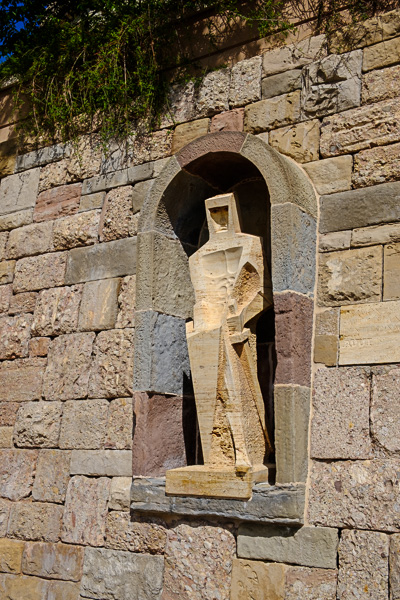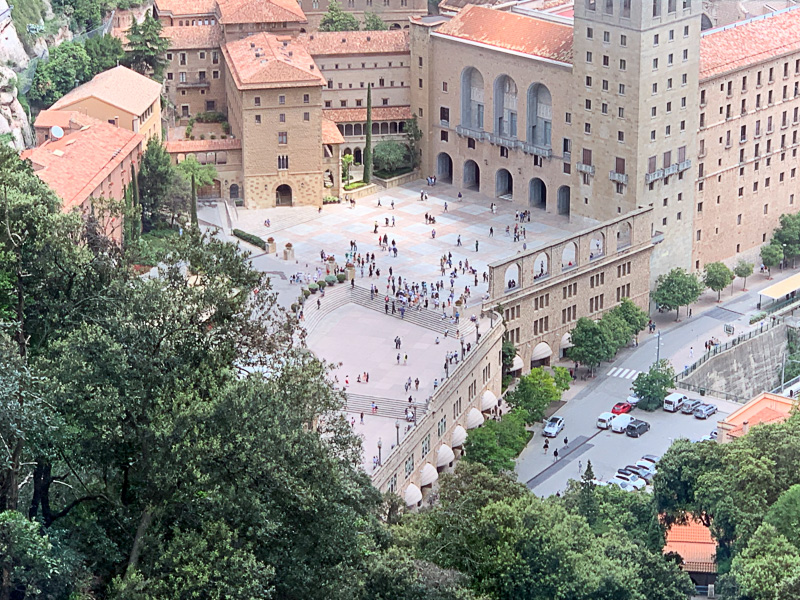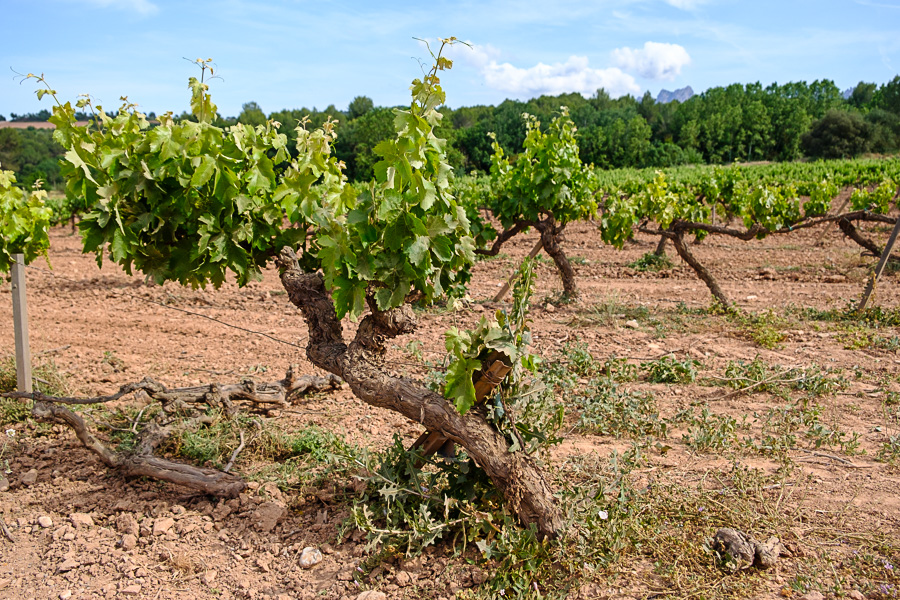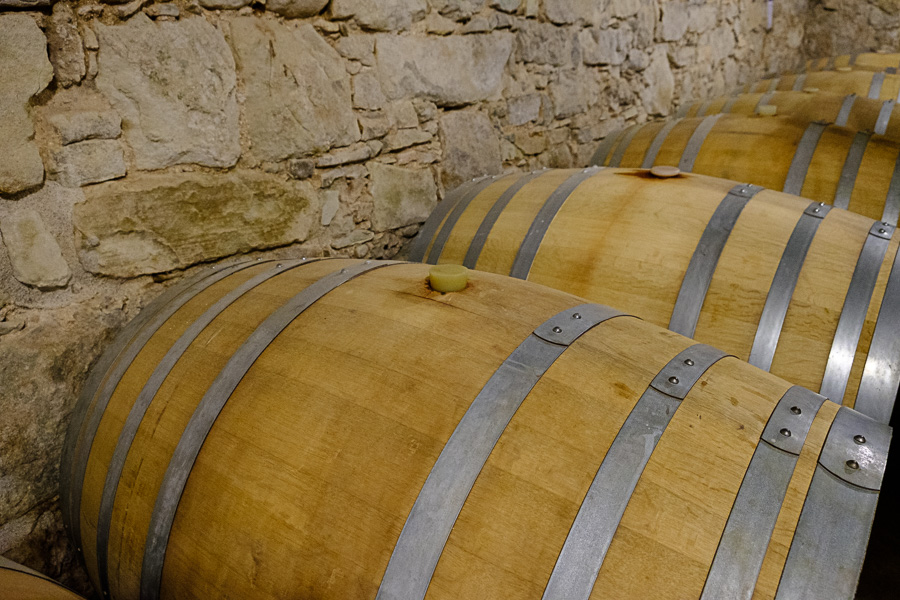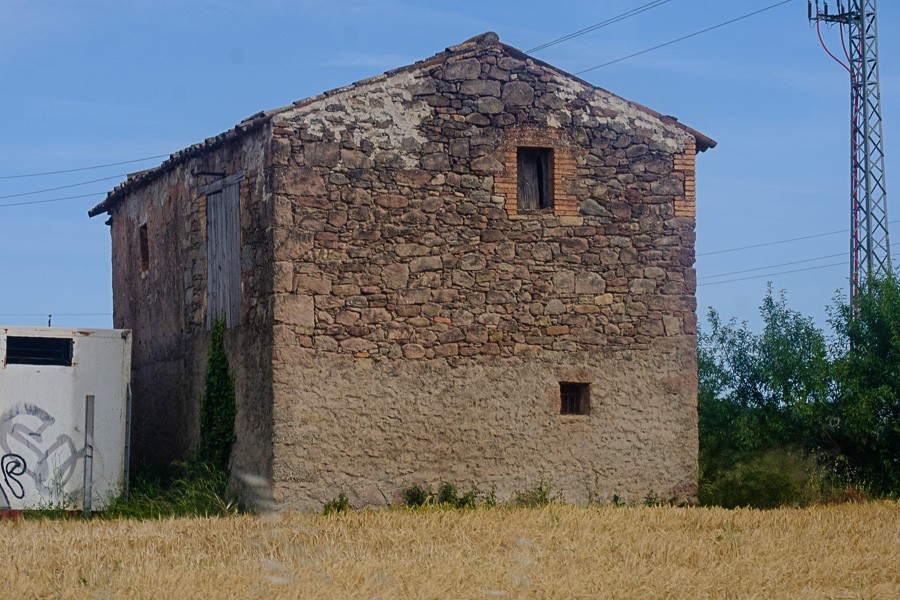Today we put our fate in the hands of a random tour group picked from the Internet to take us on an all-day tour of the Monastery of Monserrat, about an hour’s bus trip north and west of Barcelona. It worked out just fine.
On the way, our guide gave us a thumbnail sketch of Barcelona’s history, with which I will of course bore you. Barcelona was settled by the Romans 2,000 years ago. It was a relatively minor military outpost, but they did at least build a wall, which defined the boundaries of Barcelona until the Industrial Revolution in the 19thcentury. The German Visigoths, etc. took over after the Roman Fall.
Barcelona escaped for the most part domination by the Moors who were contained in southern regions of Spain and Portugal. The locals pushed the Moors out of Barcelona; Charlemagne’s son pushed them out of Monserrat.
Tragically, in the 1800s, the Industrial Revolution hit Barcelona and hit it hard. All industry was established within the Roman walls. And as happened elsewhere around the world workers streamed to the city from the hinterlands. The result: extreme overcrowding and human misery. Remember Dicken’s description of London during this same time period? Barcelona had it worse. The average life expectancy dropped to 26 years of age.
The citizens of Barcelona did, according to our tour guide, what Catalans do best: they protested, demanding, “Tear down that wall!” It took ten years but when they did the territory outside the walls went from danger filled forest and fields to what we see today. The wall existed not more than three blocks from our hotel.
The fortunes of Barcelona peaked in the 11thand 12thcenturies when it was a major Mediterranean trading port. The Black Death in the 13thcentury cut the population in half; recovery took hundreds of years. In 1469 Isabella, Queen of Catalonia, married King Ferdinand of Castile. We all know what happened next (In fourteen hundred and ninety-two, Columbus sailed the ocean blue . . .).
Napoleon did his thing in the early 1800s, invading and conquering and destroying Monserrat in the process. Most of what we saw today was the 19thcentury reconstruction of what had been there since the 16thcentury. The first hermit monks are thought to have come to Monserrat (Catalan for jagged saw blade) the mountain in the 8thcentury. It grew in importance, adding the boys’ choir in the 13thcentury. Today it is home to some 50 or so monks and about the same number of private school boys. To enter the school, the boys must be proficient at playing the piano and their parents must pay a hefty sum in tuition. The boys are asked to leave at age 14 or whenever their voices crack, thereby rendering them useless for the choir.
The basilica is home to the Black Madonna, a statue of the Virgin Mary that is much revered by Catalan people. All Catalans make a point of touching the Black Madonna at least once in their lives.
The Black Madonna legend is a good one. It seems that angles came down to heaven with a golden saw and created the distinctive saw-shaped mountain range we see today as a throne for the Madonna. Shepard’s saw a celestial light and followed it to a cave where they found the statue. People thronged to the cave, depleting attendance at mass at the local church. The priest decided to move the Black Madonna from the cave to his church but the more he tried to lift it the heavier it got. Another miracle! The priest gave up and built a church around the statue.
We spent several hours there, first touring the basilica. I once again flashed back on my trip 50 years ago with Mom to Monserrat. I didn’t recognize the exterior but immediately recalled seeing and even touching the Black Madonna once inside. Today tourism is much greater, so it takes hours in line to touch her now.
We initially used our free time to take the funicular up to the site of some of the hermit monk’s chapels. Upon reaching the top Judy decided to go back down because otherwise she’d miss the boys’ choir at 1:00 PM. So we divided to conquer: she went down and I stayed up to see what I could see. I had to cut my hiking short, however, to meet up with the group at 1:20 PM. Check out the pictures to see what I saw. Judy taped the choir and she’ll post it soon, I’m sure.
Our tour continued to the Oller de Mas winery where we were served a nice, multi-course meal, including a glass or two of the local wine. We then had a three-wine tasting session with generous pours so by the time we were back on the bus it was siesta time for much of the 1:15 trip back to Barcelona. The winery’s owner is the 37thgeneration of his family to own the property. It started out in the 12thcentury as a pottery making business. It transitioned to wine but that came to a screeching halt when the wine industry in Spain and across Europe was decimated from a fungus imported from America. The current owner’s father resumed wine making only in the past 30 years.
The weather today was partly cloudy. At the monastery the mountain peaks were in the clouds and it was windy and thus chilly. While waiting for the bus in Barcelona I actually felt two drops of rain, the first rainfall of our trip so far!
We wimped out on dinner tonight. It’s windy and chilly and we’re still full from the luncheon spread so we’re staying in with our supply of cheese, crackers and oranges. Maybe/probably/#youcanbetonit we’ll have another hit on the port wine and the candy bars we’ve paired with it.
Tomorrow we pull up stakes, make our way to the train station and take the Ave (high speed train) to Madrid and our friend Enrique who will be our guide and protector for the next three days.







